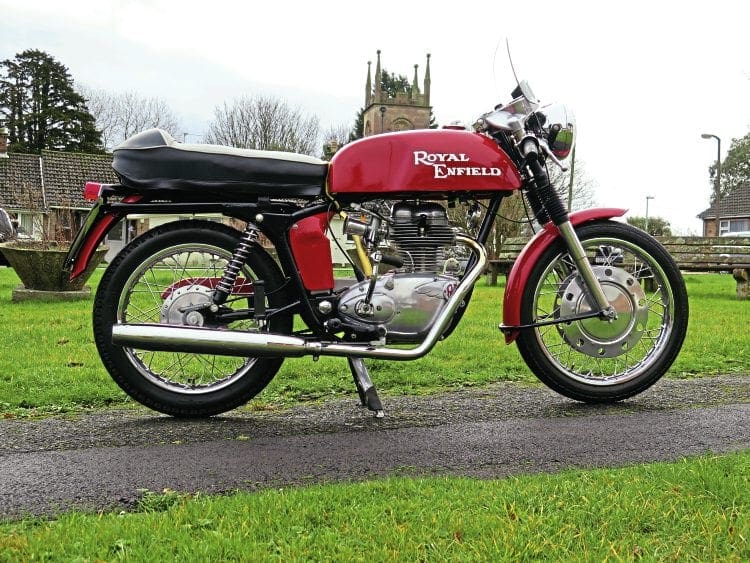Royal Enfield built a street racer for learner riders. It was fast, too
WORDS AND PHOTOS BY Oliver Hulme
ROYAL ENFIELD’S CONTINENTAL GT was surely one of the most alluring learner bikes ever built.
The GT’s predecessor, the Crusader, was described in The Motor Cycle as ‘spectacular’ at its launch in 1956. The Crusader was streets ahead of pretty much anything the rest of the British industry was turning out, and with the soon to be imposed 250cc learner limit, Royal Enfield was in the right place to exploit the change in the law.

The Crusader was a completely new design. The engine was well over‑square with a stroke of 64.5mm, a bore of 70mm and a compression ratio of 7.3:1. It was a good performer, but in 1959 the factory responded to calls for more power by introducing the Crusader Sport, upping the compression ratio to 8.3:1, fitting a hotter camshaft, lighter flywheels and a larger inlet valve. A 7-inch front brake, a large chrome tank, chrome mudguards, a rakish exhaust pipe, and inverted standard handlebars all added to the bike’s overall sporting appearance.
In 1962 the Super Five, so named because of its five‑speed gearbox, was introduced. Compression went up again to 9:1 and the inlet port was made bigger. Stylistically, however, the Super Five was something of a dog’s breakfast, with leading‑link forks, a huge front mudguard and the kind of semi-enclosed rear end that was only briefly popular – the model was dropped by 1964.
Read more in the May issue of CBG – on sale now!




